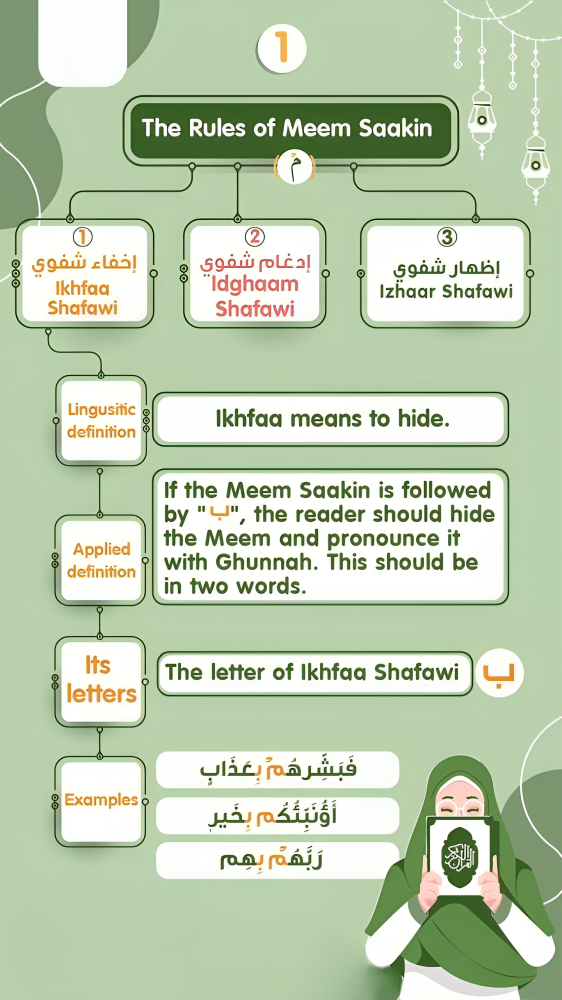Introduction
Qalqalah is a fundamental concept in Quranic recitation (Tajweed) that plays a crucial role in preserving the authentic pronunciation of the Holy Quran. When certain letters appear at the end of verses, their proper pronunciation becomes especially important for maintaining both the musical beauty and the meaning of the divine text.
What is Qalqalah?
Qalqalah refers to the linguistic phenomenon where certain letters are pronounced with a slight bouncing or echoing sound. This occurs when specific Arabic letters (قطب جد) are pronounced with a sukoon (vowel-less mark) or when they appear at the end of a word where the reader stops.
The Letters of Qalqalah
The letters that produce Qalqalah are five, commonly remembered through the mnemonic phrase “قطب جد” (Qutbu Jad):
- ق (Qaf)
- ط (Taa)
- ب (Baa)
- ج (Jeem)
- د (Daal)
Qalqalah at the End of Ayahs
When Qalqalah letters appear at the end of verses, they are particularly significant because:
- The reader naturally stops at verse endings
- The pause creates a stronger Qalqalah effect
- The sound becomes more prominent in the overall recitation
Examples from the Quran
Let’s examine some prominent examples where Qalqalah occurs at the end of verses:
- Surah Al-Falaq (113):
- “مِن شَرِّ غَاسِقٍ إِذَا وَقَبْ” (The letter ب)
- “وَمِن شَرِّ حَاسِدٍ إِذَا حَسَدْ” (The letter د)
- Surah Al-Ikhlas (112):
- “قُلْ هُوَ اللَّهُ أَحَدْ” (The letter د)
- Surah Al-Buruj (85):
- “وَاللَّهُ مِن وَرَائِهِم مُّحِيطْ” (The letter ط)
Rules for Proper Application
Degrees of Qalqalah at Verse Endings
- Strong Qalqalah (Qalqalah Kubra)
- Occurs when stopping on a Qalqalah letter at the end of a word
- The bouncing effect is more pronounced
- Common at verse endings
- Medium Qalqalah (Qalqalah Wusta)
- Occurs when the Qalqalah letter has a sukoon in the middle of a word
- Less pronounced than Qalqalah Kubra
Proper Technique
To properly execute Qalqalah at verse endings:
- Stop completely at the verse end
- Create a slight pressure behind the letter
- Release the sound with a subtle bounce
- Avoid adding an extra vowel sound
- Maintain the proper length of the bounce
Common Mistakes to Avoid
- Over-emphasizing the Bounce
- The bounce should be natural, not exaggerated
- Avoid adding unnecessary vowel sounds
- Under-emphasizing the Bounce
- The Qalqalah should be clearly audible
- Don’t skip the bouncing effect entirely
- Incorrect Timing
- The bounce should occur immediately upon stopping
- Don’t delay the Qalqalah effect
Benefits of Proper Qalqalah
- Preservation of Meaning
- Proper pronunciation ensures correct meaning transmission
- Distinguishes similar-sounding words
- Beauty in Recitation
- Adds natural musical elements to the recitation
- Creates rhythmic endings to verses
- Adherence to Tradition
- Follows the prophetic method of recitation
- Preserves the oral tradition of Quran recitation
Tips for Practice
- Listen to qualified reciters
- Record your recitation and compare
- Practice with a teacher when possible
- Focus on verse endings during memorization
- Study examples from different surahs
Conclusion
Understanding and properly implementing Qalqalah at verse endings is crucial for any serious student of the Quran. It not only enhances the beauty of recitation but also ensures the preservation of the correct pronunciation as taught by the Prophet Muhammad (peace be upon him). Regular practice and attention to detail will help develop this important skill.
About the Author
This article is published on Baytul Quran, dedicated to spreading knowledge about Quranic sciences and proper recitation techniques.





